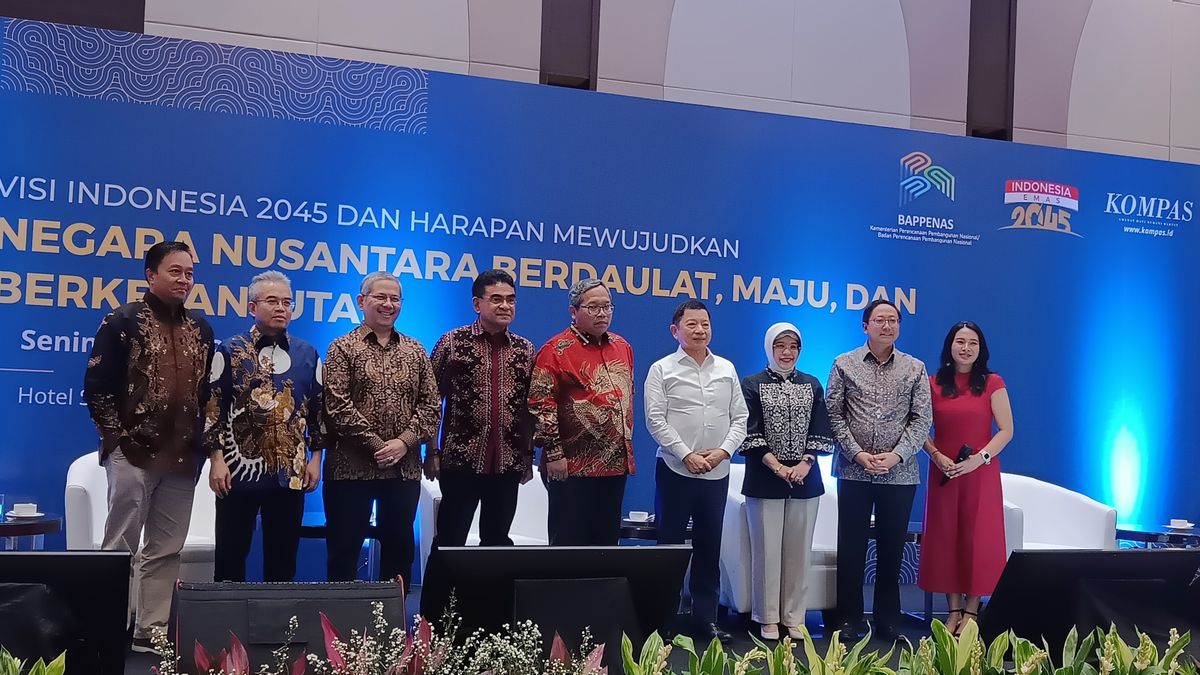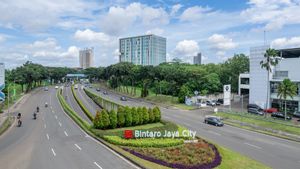JAKARTA - National economic growth in the last 20 years has been stuck in the range of only 5 percent.
This is known to be one of the factors that makes it difficult for Indonesia to become a country with high income or high income country.
Responding to this, Deputy for Economic Affairs of the Ministry of National Development Planning (PPN)/Bappenas National Development Planning Agency (Bappenas) Amalia Adininggar Widyasanti said the government itself is targeting Indonesia to get out of the middle-income trap and will be able to become a high-income country by 2045.
The target is contained in the 2020-2024 National Medium Term Development Plan (RPJMN) which is being prepared by Bappenas.
"One of our problems is that economic growth has only been around 5 percent or stuck at 5 percent," Amalia said at the 2045 Indonesian Vision event and Hope to Create a Sovereign, Advanced, and Sustainable Archipelago Country, in Jakarta, Monday, May 29.
Amalia said, based on Bappenas' analysis, if the national economic growth is only 5 percent, it is not enough to bring Indonesia to become a country with high income or high income country before 2045.
Therefore, acceleration is needed to encourage economic growth above 5 percent, in the future.
Amalia also revealed several problems that trapped Indonesia's economic growth at five percent.
Among these problems, the productivity level of the Indonesian people is still low and relatively decreasing when compared to neighboring countries, such as China, Malaysia, Vietnam, India, and Thailand.
"In fact, when compared to how our work productivity is, it is much lower than the current developed countries, we are also under China," he said.
Another problem is the contribution of the manufacturing sector in Indonesia to Gross Domestic Product (GDP) which is decreasing.
According to Amalia, Indonesia's manufacturing sector contribution had reached 27.4 percent of GDP in 2005.
However, in 2022, its contribution will actually decrease and be at the level of 18.3 percent of GDP.
"This is one of the factors why we cannot provide proper employment or provide decent and good income for the community. In fact, one of the requirements to become a high-income country is the size of income per capita," he said.
In addition, economic transformation will also bring the economy in each province to get out of the middle income trap.
The government will carry out super priority transformation efforts, namely increasing the budget for science, technology, and innovation (ipjun) towards commercialization by industry.
Second, industrialization, hydration of superior commodities to final products and labor-intensive industries, dense technology and innovation, and export-oriented. Third, new sources of economic growth, such as the blue economy, bioeconomics, and the intellectual property-based creative economy.
Fourth, accelerating energy transitions supported by integrated electricity networks, as well as green transportation.
Fifth, superplatform to accelerate digital transformation and digital talent production.
SEE ALSO:
Sixth, integration of connectivity with economic growth areas, and finally or seventh, the development of the capital city of the archipelago (IKN).
"From this transformation, it is hoped that the average economic growth in Indonesia in the future must be between 6-7 percent. It is estimated that Indonesia can get out of the middle income trap in 2041. If we can grow an average of 7 percent in the next 20 years, it will come out of the middle income trap even faster, namely in 2038," he concluded.
The English, Chinese, Japanese, Arabic, and French versions are automatically generated by the AI. So there may still be inaccuracies in translating, please always see Indonesian as our main language. (system supported by DigitalSiber.id)
















